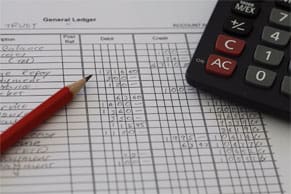Asset impairment is often confused with asset depreciation, which is a predictable and expected occurrence as an asset ages or incurs wear and tear over the course of normal use. In contrast, asset impairment reflects a more dramatic drop in asset value due to extenuating circumstances, such as changes in regulations, market conditions, environmental conditions or technology advancements—any change that renders the asset obsolete, less valuable or too damaged to use as intended.
Impairment, also called writing down, represents the period during which the market value of an asset is less than the valuation entered on an organization’s balance sheet. Impairment is always noted in accounting as a loss, even if the asset continues to perform, since impairment refers to diminished value of the asset. Asset impairments can be temporary or permanent. Permanent impairment losses must be recorded on the company’s balance sheet and income statement.
Note that asset impairment is akin to an advanced depreciation. Whenever a fixed asset undergoes a significant change that may reduce the company’s gross future cash flow to an amount below the asset’s carrying value, apply an impairment test.
Below is an impairment journal entry when the loss is $50,000.
| Account | Debit | Credit |
|---|---|---|
| Impairment Loss | $ 50,000.00 | — |
| Accumulated Impairement Loss | — | $ 50,000.00 |
| Total | $ 50,000.00 | $ 50,000.00 |
What is an Impaired Asset?
An impaired asset is an asset valued at less than book value or net carrying value. In other words, an impaired asset has a current market value that is less than the value listed on the balance sheet. To account for the loss, the company’s balance sheet must be updated to reflect the asset’s new diminished value.
In general, an impaired asset is also a long-term, tangible asset. However, accounts receivable and intangibles can also become impaired.
Key Takeaways
- Assets should be regularly evaluated for impairment to prevent overvaluation on the balance sheet.
- Assets most likely to become impaired include accounts receivable and long-term assets.
- A loss due to an asset impairment is recorded on both the balance sheet and the income statement.
- Asset impairment occurs when the net carrying amount, or book value, cannot be recovered by the owner.
- Asset impairment can occur from a one-time incident or a succession of events.
Impaired Asset Explained
As a general rule of thumb, according to U.S. generally accepted accounting principles (GAAP), the impairment threshold is crossed when the net carrying amount, or book value, cannot be recovered by the owner.
At that point, the company must reflect the asset’s diminished value in its financial statements.
How Impaired Assets Work
Impairment can occur as a result of overpaying for an asset or group of assets, such as when the value of assets acquired through a merger or acquisition has been overstated by the seller. Impairment also occurs when collection of accounts receivable becomes unlikely.
Why Does an Impaired Asset Matter?
A true accounting of impaired assets renders a more reliable picture of a company’s overall financial health. A record of an asset impairment tells investors, financial institutions and company leadership that an asset is now worth less than expected.
Some impaired assets are considered beyond management’s control, while others, such as those incurred in M&A or AR, may denote bad judgement on the part of leadership in terms of stewardship of company worth.
For example, a warehouse damaged by a hurricane is impaired through no fault of leadership. But if leadership extended credit without getting repayment terms in writing or in amounts greater than the business could afford to lose and has a dismal accounts receivable turnover ratio, those unrecoverable AR assets fall on leadership.
Accounting for Impaired Assets
To make an impairment determination, first calculate an accurate and current fair value for the asset. Next, compare that value to the amount itemized as carrying value or book value on the company balance sheet. If these amounts are the same, then the asset retains its previous value and no balance sheet adjustment is required.
However, the accounting is a bit more complicated when goodwill must also be accounted for on the balance sheet. Goodwill is an intangible asset, whether something like your company’s brand name or reputation, or in M&A, assets that are not separately identifiable.
Take for example a deal where Big Candy Co. buys Lollipop Inc. for $105 million. At the time of purchase, the company's tangible assets, including a manufacturing plant, delivery vehicles and other equipment, are valued at $80 million. Its intangible assets include trademarks and recipes valued at $10 million. The difference between the value of Lollipop’s assets and the amount Big Candy Co. paid, $15 million, will be recorded as goodwill on Big Candy Co’s balance sheet. The company considered Lollipop’s brand recognition, distribution network and loyal following on social media worth that premium.
After three years of declining sales, the company realizes that the value of the recipes and trademarks acquired in the purchase of Lollipop Inc. is less than estimated, so a $5 million impairment charge is recorded. Depreciation and amortization during that time have reduced the value of long-term assets by an additional $5 million. This means the current book value of the subsidiary is now $85 million.
Lollipop has also lost several major distributors due to inconsistent marketing and a lack of innovative new products. As a result, the company records a goodwill impairment charge of $10 million as well.
Asset Depreciation vs. Asset Impairment
Asset impairment reflects a drastic, and often a one-time and sudden, reduction in the recoverable amount of an asset. Causes run the gamut from natural disasters to manmade regulatory changes and many factors in between.
An asset’s carrying value, or book value, equals the cost to acquire the asset minus accumulated depreciation. Asset impairment is a current market value that is less than the carrying value as recorded on the company’s balance sheet.
If you were to chart asset depreciation, it would appear as a slow declining line over time. A chart depicting asset impairment would show a distinct and likely sudden drop in value, either one time or several times on the same chart, depending on how many times the asset value was impacted by one or more events.
Types of Triggering Events
Experts say regularly and routinely evaluating every asset for impairment is counterproductive. Instead, prompt response to triggering events that indicate potentially adverse effects on assets is a more effective approach.
Success with that tactic, of course, is highly dependent on a company’s ability to identify those triggering events and rally a prompt response.
Some triggering events are obvious, such as hurricanes or other natural or manmade disasters. Other triggers are not so apparent. Think obscure clauses in new or amended regulations, legal ramifications from lawsuits and other legal actions, fast-onset or prolonged deteriorating economic conditions, industry disruptors and technological obsolescence, a scandal that damages the brand reputation, bankruptcy by a major customer or other correlative effects on operating cash flows or company profits.
Companies with solid crisis management practices can add “evaluate for asset impairment” as an action item to their response plans.
#1 Cloud
Accounting
Software
Impairment Recognition and Impairment Measurement
Specifics in impairment recognitions and measurements are jointly determined and regulated by the Internal Revenue Service (IRS), the Financial Accounting Standards Board (FASB) and the Governmental Accounting Standards Board (GASB).
Some key points:
Groups of similar assets should be tested together, rather than individually, but separately from other assets outside the group.
Prior to testing, assets must be properly and accurately assessed at their fair market value in accordance with GAAP. Testing should then be used to fairly determine whether the carrying amount book value, exceeds the cost of maintaining or disposing of the asset.
If the testing reveals a loss, the asset must be noted as impaired unless it is excluded from such designation by the IRS or GAAP regulations.
Relevant ASC Regulations for Impairment
| Goodwill | Non-amortized Intangibles | Long-Lived Assets | |
|---|---|---|---|
| ASC 350 | When: Annually or based on qualitative factors. Companies should first test indefinite-lived intangible assets, then long-lived assets, then goodwill. | When: Annually or when a triggering event occurs, such as a significant change in market or economic conditions. | |
| ASC 360 | When: Triggering event such as significant decrease in the market price or adverse change in condition of the asset. |
Examples of Impaired Assets
Many asset and asset groups can become impaired. Examples include heavy equipment, raw materials, land and buildings, data centers and computing hardware and software, vehicles and machinery, and intangibles like brand value.
Testing for asset impairment is a well-regulated accounting activity. For example, GAAP standardized practice calls for testing fixed assets at the lowest level measurable in terms of identifiable cash flows. For example, testing impairment at the level of each robotic machine used in automobile manufacturing, rather than testing for impairment at the overall manufacturing plant level.
However, if no cash flows are identifiable at the low level, then impairment testing can be performed at the asset group or the entity level.
It is therefore vitally important to assess asset impairment losses accurately and according to relevant governing bodies.









